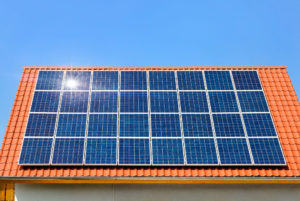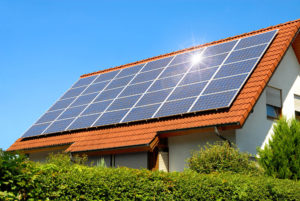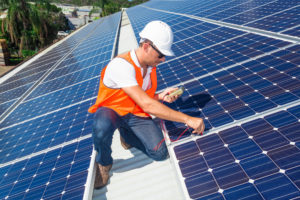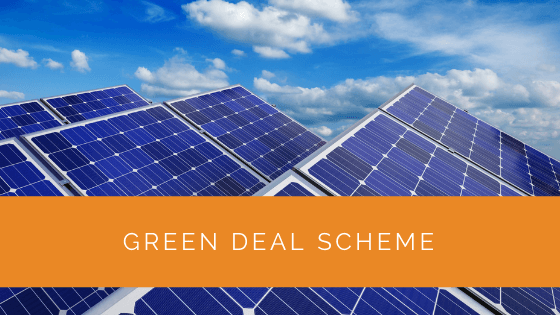In an era where environmental sustainability is at the forefront of global consciousness, the Green Deal Scheme emerges as a pioneering initiative by the UK government. This comprehensive guide aims to demystify the Green Deal Scheme, shedding light on its origins, operation, and the alternatives that have evolved since its inception. Whether you’re a homeowner seeking to enhance energy efficiency or simply curious about the green initiatives shaping our future, this guide will provide you with the knowledge you need to navigate the world of sustainable living.
Contents
- 1 Key Takeaways
- 2 What Is The Green Deal Scheme?
- 3 How Does The Green Deal Scheme Work?
- 4 What Is The Golden Rule?
- 5 Does The Green Deal Scheme Still Exist?
- 6 What Do The Green Deal Loans Cover?
- 7 What Happens If You Have An Existing Green Deal Loan?
- 8 Is There An Alternative For The Green Deal Scheme?
- 9 Why Was The Green Homes Grant Scheme Closed?
- 10 What Was Covered Under The Green Homes Grant?
- 11 Case Study: The Impact of the Green Deal Scheme on Sustainable Home Improvements
- 12 Expert Insights From Our Solar Panel Installers About the Green Deal Scheme
- 13 Discover the Power of Solar with Solar Panels Network
- 14 Summing Up
Key Takeaways
- The Green Deal Scheme was a UK government initiative to improve energy efficiency in homes and businesses by providing loans for energy-saving improvements. It was launched in 2013 but ceased in 2015 due to various issues.
- The scheme was based on the “Golden Rule,” which stipulated that loan repayments should not exceed the energy savings made through efficiency measures.
- Although the Green Deal Scheme is no longer active, there were alternatives like the Green Homes Grant Scheme, which aimed to make homes more energy-efficient but faced challenges and closed early in 2021. New government initiatives are continually introduced to support energy savings.
What Is The Green Deal Scheme?
The Green Deal Scheme is a UK government initiative to see a growth in the energy efficiency of the British private and public sectors. This scheme was initially proposed as the Coalition Government’s Energy Bill centrepiece in December 2010.
Through this scheme, private energy organisations will provide structural and home improvements to commercial and domestic customers.
The structural improvements can be wall insulation, cavity wall insulation, solid wall insulation, loft insulation, double glazing, draught-proofing, etc. Overall, the Government provided loans to customers for energy-efficient home improvements. The owners would pay these loans back from the energy bill savings.
The Green Deal was officially launched in 2013 and removed or reduced any upfront cost required for energy-saving installations. This was a pay-as-you-save package, making it easier for the customers to shift to green energy.

How Does The Green Deal Scheme Work?
The Green Deal scheme is unlike a standard loan where the owner has to repay it till the end. Since the scheme is on properties, the property’s current owner must pay off the loan. This means if you have applied for the Green Deal Scheme, you need to repay the loan until you are the house owner.
If you sell your house during the loan period, it will be transferred to the new owner or the billpayer. The owner will also get the benefits of living in an energy-efficient house.
The repayments of the Green Deal loans are connected to the electricity meter of the owner. Owners will see a charge on their bills till they have paid off the loan.
What Is The Golden Rule?
The core of the Green Deal Scheme is based on the Golden Rule. According to the Golden Rule, the loan repayment should not exceed the amount the customer has saved on their fuel bills. This is after they have taken energy efficiency measures at their home.
The loan will cover only what a particular measure’s savings are predicted to be. This means if the installation cost is more than the lifetime savings, it is the responsibility of the owner to fill the difference.
The Golden Rule was anticipated not to hurt the property’s value. However, the Golden Rule was not a good factor in real-life scenarios since many houses did not have enough energy savings to pay for the loan.
Does The Green Deal Scheme Still Exist?
The Green Deal Scheme ran between 2013 and 2015 but was later stopped. The UK government stopped funding when issues related to the scheme arose extensively. Since the Green Deal Scheme was linked to the house and not the owner, it wasn’t easy to sell it.
Moreover, it was not the right scheme for all homes. Some houses do not have abundant energy usage. This means the saving was not as much to make the repayment. Hence, it became a costly affair for those households.
The UK government stopped this scheme in 2015 since the funding was for only 15,000 Green Deal loans from its initiation in 2013. This was very low and crushed the expectations of the Government. However, certain existing users are still running on the loan and making repayments for the same.
What Do The Green Deal Loans Cover?
Earlier, the Green Deal had several measures eradicated after its closure in 2015. However, a small range of measures will be available to the owner for those who applied for the loan before the closure.
These energy efficiency measures covered by the Green Deal loan are as follows –
- Replace or new boiler installation
- Biomass boiler
- Cavity wall insulation
- Floor insulation
- Solid wall insulation
- Loft insulation
- Double glazing
- Draught proofing
- Storage heaters with fan assistance
- Lighting, heating, and hot water controls
- Heat pumps for air and ground source
- Recovery device from flue gas
- Innovative technologies like wastewater heat recovery systems
You must use a provider or installer approved by Green Deal to get the loan.
What Happens If You Have An Existing Green Deal Loan?
After the Government stopped funding the Green Deal Finance Company in 2015, they offered no loans to the customers for two years. However, the Green Deal Finance Company started funding selected home improvements in 2017. Several private investors backed the project.
The Green Deal Finance Company gave the funding for the small range of measures that are mentioned above. This means several people still have existing Green Deal Loans after 2017 or before the original closure 2015.
If you have an existing loan, these are some steps you need to follow.
Early Loan Repayment
The Green Deal Finance Company stated they were removing early-repayment fees for the loans taken post-May 2014. However, people who took a loan before this date could still repay the loan early but must pay a fee.
If the loan amount is less than £8000 and spread over 15 years or less, the owner will not pay any repayment fee. As the Green Deal Finance Company mentioned, anyone who does not fall under these categories must provide an early repayment fee.

Check Warranty
Most of the measures offered by Green Deal have a minimum warranty of five years. There is also an extended guarantee of 10 years that covers building damage incurred during the installation of the measures.
The providers must have guarantees for building damage and home improvements for 25 years to measure cavity and solid wall insulation. If you find a problem after the expired warranty period, you must repair it out of pocket.
If you have an existing loan, it is better to re-read the loan and see the warranty period. You do not want the burden of a non-functioning product to pay for its repairs.
Selling or Buying A House
One of the main reasons for closing the Green Deal was problems in selling the house. Many new owners did not see Green Deal as a sustainable scheme and avoided buying houses under the scheme.
If you have an existing loan and want to sell the house, you must disclose the Green Deal loan to the new buyer. The buyer might not be comfortable with this deal, in which case you need to come to a negotiation or make an early repayment.
The same rule applies when you are buying a new house. It is essential to know that a house under the Green Deal will seek electricity payment from the owner at the time. This means the house’s previous owner may have taken the loan for home improvements.
However, the loan will be transferred to you when you buy the house. Therefore, you must make any payments related to the Green Deal loan.
The person buying the new house will need to ask for complete information about the Green Deal loan. If a small family has low energy usage, the loan or the installed solar measurements might not have any usage.
Switch Energy Companies
One of the perks of having a Green Deal loan is the accessibility of switching energy providers. This deal was linked with big energy providers such as Npower, SSE, British Gas, Scottish Power, Eon, and EDF.
You will find many other big names if you are unsatisfied with your current energy provider. However, you must learn all the essential terms and conditions of switching energy providers.
Make sure you are satisfied with the conditions; otherwise, you may be stuck with another energy provider who is not suitable.
Is There An Alternative For The Green Deal Scheme?
Several alternatives were initiated by the Government in England, out of which the Green Homes Grant Scheme gained the most popularity. It was launched in September 2020 to help homeowners make their houses more energy-efficient. The focus was also on decreasing their energy bills and toxic emissions.
This grant was for £1.5bn and wanted to improve 600,000 homes. The Green Homes Grant Scheme was supposed to run till 31 March 2022. However, it was closed on 31 March 2021, a year before its original closing date.
The Green Homes Grant was only available in England. It did not apply to Scotland, Northern Ireland, and Wales citizens.
Why Was The Green Homes Grant Scheme Closed?
Like the Green Deal Scheme, the Green Homes Grant Scheme was closed before its end date. For starters, the grant promised home improvements for 600,000 homes. However, only 10% of the numbers promised were done to date.
Several homeowners complained about the application process and the slow administration process. There was a delay in voucher distribution, and the design for the scheme was done in a hurry.
Due to this, the Green Homes Grant was plagued with several issues that ultimately led to its closure. The Government promised to honour the applications made before the closure date. This meant you could make energy-efficient improvements to your home if you applied for the Green Homes Grant before 31 March.
What Was Covered Under The Green Homes Grant?
The Green Homes Grant was slightly different from the Green Deal regarding coverage. Through this grant, homeowners could apply for a maximum of £5,000 vouchers for primary home improvements. The home improvement measures included a low-carbon heating system such as a ground or air source heat pump. It also covered insulations.
Homeowners from low-income households could apply for a maximum of £10,000 vouchers. These homeowners did not have to provide any amount to the cost.
The other vouchers provided an amount for two-thirds of the improvement costs. You could also apply for vouchers for secondary measures. However, the homeowners must have the remaining money after the primary measure application.
The secondary measures were draught-proofing, heating controls, double glazing, triple glazing, and replacing energy-efficient doors. Moreover, solar thermal panels were covered in the Green Homes Grant.
The measures not included in the grant were solar photovoltaic panels and gas boilers.

Case Study: The Impact of the Green Deal Scheme on Sustainable Home Improvements
Background
At Solar Panels Network, we have closely followed government initiatives like the Green Deal Scheme, which aimed to promote energy efficiency in UK homes. One of our clients, a homeowner in the West Midlands, sought to enhance their property’s energy efficiency and reduce carbon emissions. The Green Deal Scheme provided an ideal opportunity to explore energy-saving measures without the burden of upfront costs.
Project Overview
The project involved implementing a range of energy-efficient upgrades under the Green Deal Scheme. The homeowner aimed to reduce energy consumption, lower utility bills, and increase overall property comfort. Our role was to guide them through the process, ensuring that the chosen measures met their specific needs and provided maximum savings.
Implementation
- Energy Assessment: Conducted a comprehensive energy audit to identify areas for improvement, including insulation, heating, and glazing.
- Selection of Measures:
- Cavity wall insulation to reduce heat loss.
- Installation of an air source heat pump to replace the old gas boiler.
- Double glazing to improve thermal efficiency and reduce noise.
- Financing Through Green Deal:
- Applied for the Green Deal loan to cover the costs of the upgrades.
- Ensured that the repayment plan adhered to the Golden Rule, with repayments not exceeding the savings achieved on energy bills.
- Installation and Monitoring:
- Coordinated the installation of the selected measures with certified Green Deal providers.
- Set up monitoring systems to track energy savings and efficiency improvements.
Results
- Energy Savings: The upgrades resulted in a 25% reduction in annual energy consumption, translating to significant savings on electricity and heating bills.
- Increased Comfort: Improved insulation and new glazing enhanced the home’s thermal comfort, making it warmer in winter and cooler in summer.
- Environmental Impact: The project reduced the household’s carbon footprint by approximately 3 tonnes per year, aligning with the client’s environmental goals.
- Financial Benefits: The homeowner benefited from a Green Deal loan with repayments comfortably covered by the savings on their energy bills, demonstrating the financial viability of the scheme.
Summary
This case study highlights the practical benefits of the Green Deal Scheme for homeowners interested in energy efficiency. While the scheme has ended, the principles of affordability and long-term savings remain relevant. The client’s experience underscores the importance of government initiatives in promoting sustainable home improvements. At Solar Panels Network, we continue to support homeowners in navigating the evolving landscape of energy efficiency grants and schemes, helping them achieve both environmental and financial benefits.
Expert Insights From Our Solar Panel Installers About the Green Deal Scheme
The Green Deal Scheme was a pioneering effort by the government to make energy-efficient home improvements accessible to all. While it had its challenges, it set the stage for subsequent initiatives and highlighted the importance of sustainable living practices.
Lead Energy Consultant
One of the key takeaways from the Green Deal Scheme was the emphasis on the ‘Golden Rule.’ This principle ensured that any repayments were affordable, making it an attractive option for homeowners looking to invest in energy efficiency without upfront costs.
Renewable Energy Advisor
Despite the scheme’s end, the Green Deal demonstrated the potential savings from energy-efficient upgrades. It’s a reminder that investing in renewable energy and efficiency is not just about environmental benefits but also about long-term financial savings.
Senior Solar Installer
Discover the Power of Solar with Solar Panels Network
Are you navigating the world of solar installations? Look no further than Solar Panels Network, the UK’s trusted partner in harnessing the sun’s potential. Our dedication goes beyond just installations; we’re on a mission to transform how homeowners and businesses across the UK perceive and utilise energy. By choosing us, you’re reducing your carbon footprint and making a smart financial move that promises savings for years ahead. Contact us today and embark on your solar journey.
Summing Up
The Green Deal Scheme was introduced to maintain a positive outlook towards clean and green energy. However, the Government failed to maintain the scheme for a long time due to several issues.
After this, the Government initiated many other grants, out of which the Green Homes Grant seemed beneficial to the homeowners. However, the Green Homes Grant also failed to work mainly due to the fewer applications than the Government initially promised.
The grant was also only for citizens of England and not for other parts of the UK like Northern Ireland, Wales, and Scotland.
Despite multiple failures, the Government continues to launch new grants and schemes that would benefit you while improving your home. This ensures that people who wish to live a greener life will find energy savings solutions provided by the Government.
About the Author
Solar Panels Network stands at the forefront of solar energy solutions, driven by a team of seasoned solar engineers and energy consultants. With over decades of experience in delivering high-quality solar installations and maintenance, we are committed to promoting sustainable energy through customer-centric, tailored solutions. Our articles reflect this commitment, crafted collaboratively by experts to provide accurate, up-to-date insights into solar technology, ensuring our readers are well-informed and empowered in their solar energy decisions.

